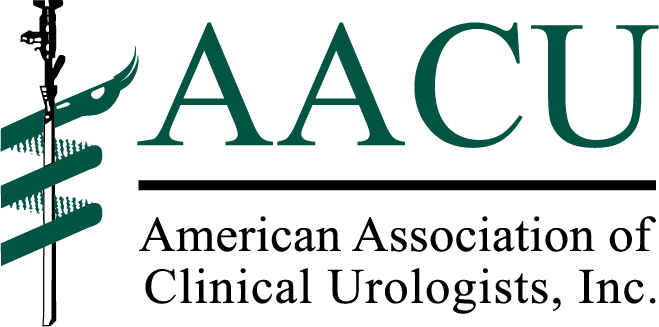Article
Work force shortage projections climb
If medical specialties were competing for which would have the most dire shortage of practicing physicians by 2025, urologists would likely win.
National Report-If medical specialties were competing for which would have the most dire shortage of practicing physicians by 2025, urologists would likely win.
Read - The Affordable Care Act: How it has impacted men’s health
Urologists have for years sounded the alarms about work force issues. But a new nationwide report looking at all medical specialties, including primary care, singles out urology as one of the biggest areas of concern.

Dr. OrlowskiThe physician work force report, released April 5 by the Association of American Medical Colleges (AAMC), suggests that the United States will experience a shortage of 61,700 to 94,700 physicians in the next decade. The report goes on to say that under virtually every health care scenario, the supply of surgical specialists, including urologists, is projected to decline by 2025. In contrast, the supply of primary care physicians, medical specialists, and other specialists is expected to increase but not enough to meet the demand, according to Janis M. Orlowski, MD, AAMC’s chief health care officer and an author of the report.
It gets worse.
“In particular, we note in the report that for urology, we see the number of people leaving the field of urology, meaning those retiring and dying, is greater than the number of new people who are entering the field of urology,” Dr. Orlowski told Urology Times.
Also see: States attempt to limit importance of MOC
The only other specialty to stand out in a similar way is ophthalmology, according to Dr. Orlowski.
Next: Reports provide concerning data
Two additional reports-an abstract presented at the 2016 AUA annual meeting by University of North Carolina researchers and the recently released 2015 AUA Annual Census-also provide concerning data about the present and projected work force in urology. In particular, the North Carolina study found that, while the overall urology full-time equivalent (FTE) work force (urologists plus advanced practice providers) is expected to increase over the next 20 years, from 14,343 in 2015 to 14,806 in 2035, the number of urologist FTEs is expected to plummet, from 10,772 to 8,505.
Have you read: How residents can prepare for changes in physician measurement
Christopher M. Gonzalez, MD, MBA, professor and chairman of urology at University Hospitals Case Medical Center, Case Western University, Cleveland, who has long studied work force issues in the specialty, says age has a lot to do with the shortage. Not only is the general population aging and will need more medical care, but the age of the urology work force is climbing as well.
“We have one of the oldest work force groups of all the surgical specialties,” Dr. Gonzalez said.

With a median age of 53 years, urology represents the second oldest surgical specialty, following on the heels of cardiothoracic surgery, which has a median age 53.6 years, according to the study from the University of North Carolina at Chapel Hill by Raj S. Pruthi, MD, professor and chair of urology, Maxim McKibben, MD, a urology resident, and co-authors.
Also see: CMS halts PSA quality measure-for now
“About 20% of our specialty is 65 years of age or older. So, 20% could retire very soon,” Dr. Gonzalez said. “With new regulations and practice changes right now, the concern is that many will say, ‘It’s not worthwhile to practice anymore from a financial or quality of life perspective, I am going to retire.’ ”
Next: Shortage is inevitable
Shortage is inevitable
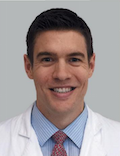
Dr. McKibbenIn any scenario, there are going to be far greater numbers of urologists retiring than coming through training programs, according to Dr. McKibben.
Read: Single-payer proposals crop up at state, federal level
“The shortage of urologists is inevitable. And even if there are pretty large increases in residency training, it’s probably not going to fill that gap,” he said.
There could be glimmer of hope concerning retirement age in the specialty. In its 2015 Annual Census, the AUA reported that nearly 30% of the 11,990 practicing urologists in the United States are delaying retirement until at least 71 years of age. That’s compared to 22.7% a year ago.
Other concerns are changing work-life patterns in the specialty and whether young urologists and the increasing numbers of women entering the specialty will work as many hours as the prior generation, according to Dr. Gonzalez.
Women account for about 8% of urologists, but 25% of incoming residents, according to Dr. Pruthi.
“Previous studies, including the AUA Census, have demonstrated that female physicians tend to work fewer hours than their male counterparts. This isn’t to say that we shouldn’t encourage women to enter the field of urology. The feminization of our work force has been an important positive trend in our field, and we should encourage and support further growth at all levels. But, fewer hours potentially affects the effective full-time equivalent urology positions. In addition, young physicians of both genders desire more work-life balance with fewer work hours than the previous generation, and this should be accounted for,” Dr. Pruthi said.
Still another concern that could fuel the shortage is the prevalence of burnout in the specialty, Dr. Gonzalez said.
Recommended: Is a ‘perfect storm’ heading for urology?
“We know there could be a higher burnout rate amongst urologists compared to other surgical specialties,” he said. (Also see, “Urologist burnout: Exhaustion jumps, satisfaction slumps.")
Next: Supply vs. demand gap in rural America
Supply vs. demand gap in rural America
Its 2016 report is the AAMC’s first physician work force report to look at disparities in physician supply and demand. The authors found, overall, that Caucasians in an urban environment will have greater physician access and greater utilization of physicians than other races and individuals who live in rural communities. In one scenario they studied, the authors looked at how many physicians would have been needed in 2014 if everyone had equal utilization based on insurance, geography, and race. If that were the case, Americans would have needed an additional 96,000 physicians 2 years ago, according to Dr. Orlowski.
Read: Groups urge increased focus on men’s health
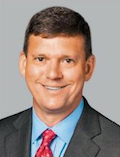
Dr. GonzalezIn urology, the disparity between urban and rural practice is particularly concerning, according to Dr. Gonzalez.
“The number of urban to rural urologists is about seven to one. The profile of the urologist in an urban setting is going to be younger in age and associated with larger groups, whereas the profile of a urologist in a rural setting is going to be a bit older in age and either in solo practice or with just one other partner,” Dr. Gonzalez said.
Also see: Competition-stifling facility regulations scrutinized nationwide
“If we have an older work force in the rural populations, which represent about 54 or 55 million people living in the U.S., they’re not going to get covered. And we know right now that over 60% of the counties in the U.S. do not have a urologist.”
Next: Quality of care at stake
Quality of care at stake
Quality of care is a potential consequence of the urologist shortage. Studies have shown that urologist density impacts outcomes and survival in urologic oncology, according to Dr. Pruthi.
Read - The season for meetings: Why I attend them (and why you should too)
“I think, as practitioners, we all went to medical school, and we all have a primary interest in delivering quality of care, and the shortage, which would likely limit access, threatens it,” he said.
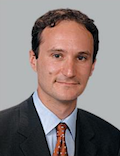
Dr. RubensteinAbility to recruit is a side effect of the shortage, which is already occurring (even in urban America), according to Jonathan Rubenstein, MD, director of coding and compliance at Chesapeake Urology in Baltimore.
“We do have some challenges in recruiting new physicians, as there are only a certain number of new graduates each year, and the number of available positions is greater than the number of providers looking for positions,” Dr. Rubenstein said. “However, as my practice is in an urban area, we do find it somewhat easier to recruit than available spots in more rural areas. It can be challenging to recruit subspecialists to smaller cities and rural areas.”
About 41% of urology practices have difficulty filling urologist vacancies, according to the AUA Census.
Fixing the problem
The time to start fixing the physician shortage is now, according to Dr. Orlowski.
“We believe that it’s critical to address the situation now because, for most of the areas of physician specialty, it takes from 8 to 10 years for individuals to be trained,” she said.
Also see: Which candidate’s health care plan do you like?
Individual states have examined the physician work force shortage and taken steps to alleviate it. Florida is one example. When it was revealed that the state would face a deficit of 7,000 physicians in the next 10 years, Florida directed funds to graduate medical programs, according to Dr. Orlowski. (Also see, “Work force proposals may endanger patient safety, professional standards” at www.urologytimes.com/proposals).
Next: Creating more residency spots
One of the answers that may seem simple enough is to create more residency spots. But that’s not so easy.
Read: Data on PDE-5’s renoprotective role fail to match early results
“When we projected the shortage several years ago, we asked medical schools to increase their numbers and medical schools have increased the number of medical students by 26%. As you know, after medical school, people need to go into residency training and the majority of residency training spots are supported by the federal government. And we have had a freeze on the number of slots that are paid for by the federal government for 20 years. We need that freeze lifted and need more slots,” Dr. Orlowski said.
The Balanced Budget Act of 1997 froze Medicare funding of residency positions at 1997 levels, which was about 170 slots for urology each year, according to Dr. Gonzalez.
“Now we have about 280, but that’s all coming out of either physicians’ pockets, philanthropy, or hospitals. That’s the only reason [residency slots have] grown. It is a big problem,” Dr. Gonzalez said.
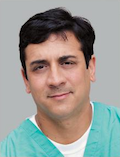
Dr. PruthiDr. Pruthi said the University of North Carolina increased the residency spots for urology by one per year.
“And we did it on our clinical dollars,” he said. “That’s the money that pays faculty salaries, research efforts, and other educational endeavors. In what other field do the people doing the job of training the people below them take money out of their own pockets to train more people?”
Even in a more perfect world, increasing the supply is limited in its capacity to help, according to Dr. Pruthi.
Also see: Genetics of two bladder cancer variants analyzed
“There are about 120 residency programs. If all of them took one more resident a year, that is going to be 120 times about $70,000 which is the direct cost of a resident’s salary [at North Carolina]. And that doesn’t include the indirect expenses. First, we have to get the money to do that. Second, not every residency has the caseload and faculty to train more people. There’s a whole infrastructure behind that. All easier said than done,” Dr. Pruthi said.
Next: The role of advanced practice providers
Another solution is to pad the work force with advanced practice providers (APPs).
Read: Do you ERAS? The future of post-cystectomy care
“If you factor in [APPs], the difference in the supply versus demand is not as dire as what has been reported. I think the advanced practice providers are at least going to be a stopgap over the next decade or so, until more urologists graduate from residency programs. Advanced practice providers are invaluable and will even be more so in the future as the number of urologists decreases,” Dr. McKibben said.
There are about 8,000 APPs in urology, and about 62% of urology practices employ them, according to Urological Association of Physician Assistants (UAPA) President Charlene Kreiensieck, PA-C, MPAS.
The work force outlook for APPs is very different from that of physicians, Kreiensieck said.
“Physician assistants and nurse practitioner are among the top ten careers in this country,” she said. “This has led to a vast increase in the number of applicants to these programs. There are currently over 200 PA programs in this country, with more slated to open in the future. There will come a point in time when the supply of APPs will outweigh the demand and the field could be saturated.”
But with urology’s need for additional providers greater than most medical specialties, the demand for APPs could continue to be steady.
“My feeling is that as more and more urology practices successfully integrate advanced practice providers into their offices, the trend will be to follow suit,” said Kreiensieck. “Hopefully, urologists will be willing to provide advanced educational opportunities for both the PAs and NPs interested in the urology specialty. The UAPA is committed to engaging these PAs and providing educational opportunities. There are several urology residency programs for physician assistants, as well.”
While it’s a solution, filling the gaps in urology care with advanced practice providers is only a part of the fix, according to Dr. Gonzalez. It’s a more impactful solution in primary care than in surgical specialties.
“Advanced practice providers can do probably 75% to 80% of what a primary care doctor can do. In urology, it’s probably along the lines of 40% and mostly it’s going to be seeing patients in the clinic,” Dr. Gonzalez said.
What you can do to help
There are bills seeking to lift the freeze on government-paid residency expansions (see “Legislation for change in progress")
To help, individual urologists can write to their senators and representatives or work with medical or specialty societies on efforts to pass legislation.
Also see: Markers redefining prostate cancer care
“The bottom line is urologists need to help us in organized urology in our grassroots lobbying efforts,” Dr. Gonzalez said.
Next: Legislation for change in progress
Legislation for change in progress
There are three proposed bills to increase the number of federally funded residency slots:
The Resident Physician Shortage Reduction Act of 2015 (H.R. 2124). This bill, introduced by Reps. Joseph Crowley (D-NY) and Charles Boustany, Jr., MD (R-LA), increases the number of residency slots nationally by 3,000 each year between 2017 and 2021, for a total of 15,000. At least 1,000 newly available slots each year must be used for a shortage specialty residency program as identified in the National Health Care Workforce Commission’s report.
Have you read - Words of wisdom: ‘Patients don’t choose when they get sick’
The Resident Physician Shortage Reduction Act of 2015 (S. 1148). Introduced by Sens. Bill Nelson (D-FL), Charles Schumer (D-NY), and Senate Democratic Leader Harry Reid (D-NV), this bill also increases the number of residency slots nationally by 3,000 each year between 2017 and 2021, for a total of 15,000. At least 1,500 slots each year must be used for a shortage specialty residency program as identified in the National Health Care Work force Commission’s report.
(Visit the AAMC website for a side-by-side comparison of the two bills: bit.ly/BillsCompared.)
Training Tomorrow’s Doctors Today Act (H.R. 4774). Introduced by Rep. Kathy Castor (D-FL), this legislation would help to lift the 20-year freeze on Medicare support for a share of residency training costs. The bill aims to provide federal support to help train an additional 3,000 resident physicians a year, while introducing accountability and transparency initiatives for institutions receiving Medicare funding for physician training.
Urologists can learn more on the AUA’s main advocacy page: www.auanet.org/advocacy, and find lists of legislation supported by the AACU and the AUA at www.aacuweb.org/jac365 and www.capwiz.com/aua/issues/, respectively.
More from Urology Times:
Pre-op mpMRI variables predict post-RARP recurrence
Sunitinib vs. everolimus: PFS, toxicity differ in study
Placement of a hydrogel rectal spacer before RT for prostate Ca
Subscribe to Urology Times to get monthly news from the leading news source for urologists.
















